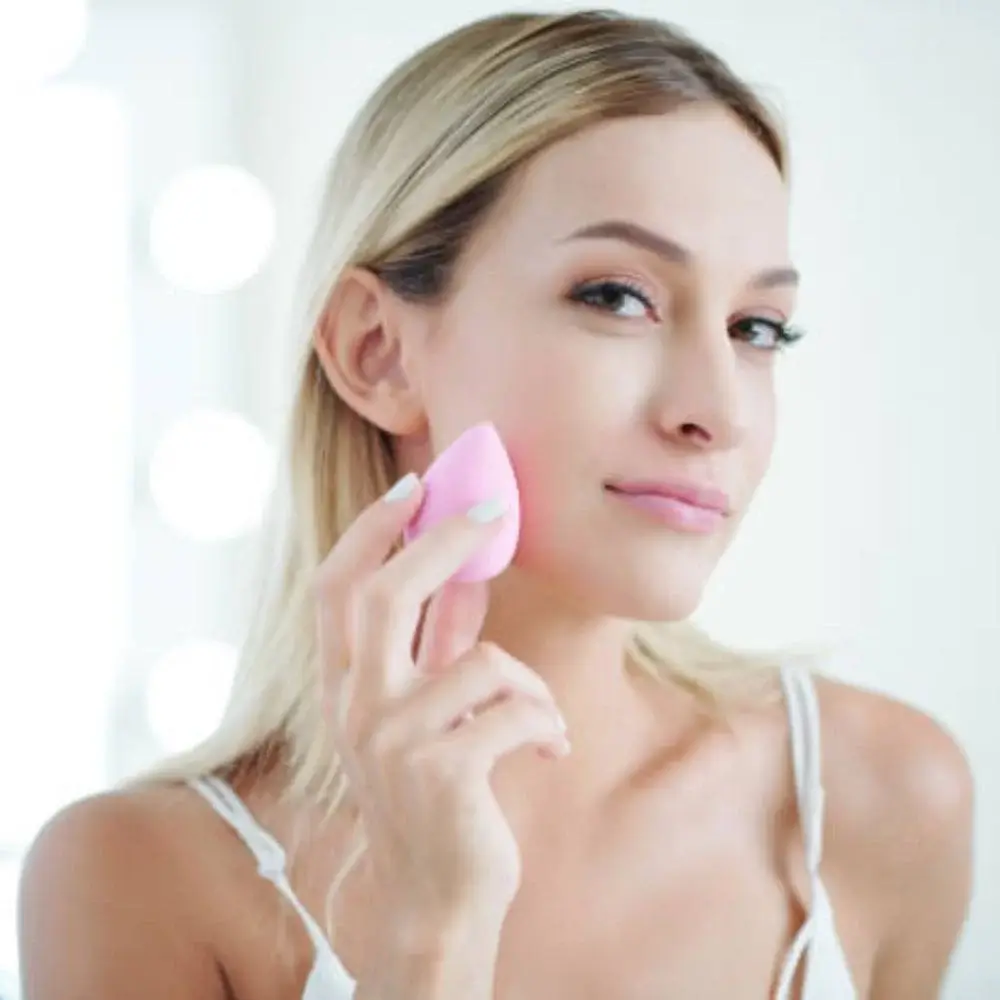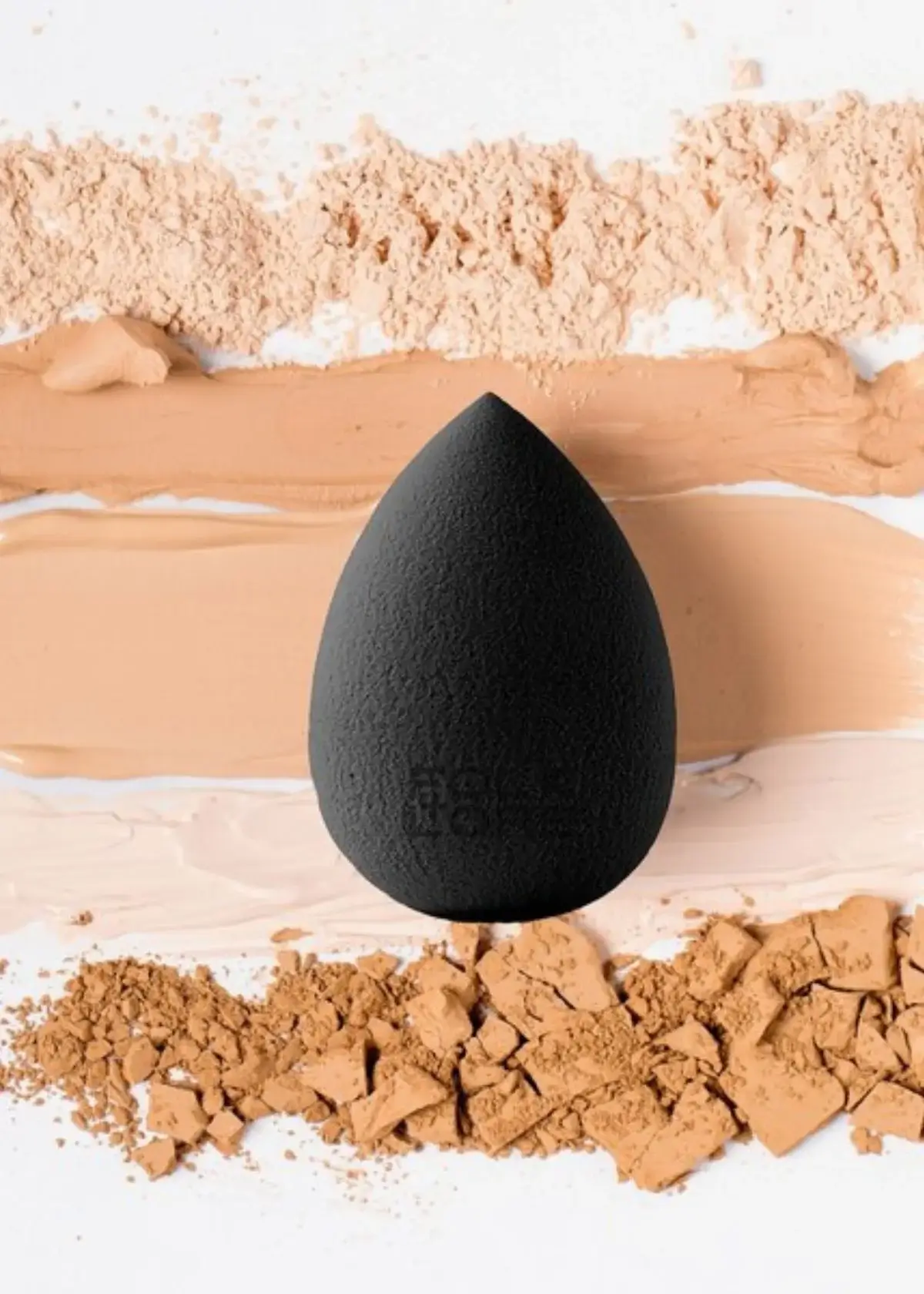Beauty blenders have become an indispensable tool in our makeup kit for many of us. But one of the most common questions that has often been asked is whether beauty blenders are safe for sensitive skin types. After all, we don't want to take any chances when it comes to our skin. In this blog post, we'll dive into the world of beauty blenders and sensitive skin types and answer this vital question!
First things first, what is a beauty blender? Simply put, it is a sponge-like makeup applicator designed to help apply foundation, concealer, and other makeup products for an even, flawless finish. Beauty blenders are typically made of foam or other synthetic materials, such as polyurethane and polyester. However, these materials can pose some risks for individuals with sensitive skin.
One of the main issues that arise with beauty blenders is their potential to harbor bacteria. The sponge-like material is prone to trapping product residue and moisture, which provides an ideal breeding ground for bacteria to thrive. This can lead to skin irritation, rashes, and even infections, especially for individuals with sensitive skin types.
Another factor that might make beauty blenders unsafe for sensitive skin is the type of products used with them. For instance, if the beauty blender is used to apply oil-based or heavy products, it can cause clogging of pores, leading to acne and other skin problems. It's important to note that sensitive skin types are often more susceptible to these issues, making it crucial to choose the right products.
So, are there any safe alternatives for sensitive skin types? Yes, there are! One option is to choose a silicone sponge, a non-porous material less likely to harbor bacteria. Another alternative is to use clean, sanitized brushes to apply makeup products. This will ensure that you are not transferring bacteria to your face and will minimize the risk of skin irritation or infection.
Apart from the material of the beauty blender, the method of cleaning the tool is also crucial. It is essential to sanitize beauty blenders regularly to prevent the buildup of bacteria and other harmful agents. There are many cleansers on the market specifically designed for cleaning makeup tools, or you can choose to use mild soap or baby shampoo mixed with water to clean your beauty blender.
Beauty blenders have become a household name in the makeup world, and many of us love the convenience and flawless finish they provide. However, using a beauty blender may not be the best option for individuals with sensitive skin types. With the potential to harbor bacteria, trap product residue, and clog pores, it's essential to be cautious when using beauty blenders. Fortunately, safe alternatives, such as silicone sponges and clean brushes, can provide similar results without the risks. Remember to clean your beauty blender regularly with a gentle cleanser, and most importantly, always listen to your skin and choose products that work best for you.
Achieving flawless makeup looks has been made easier thanks to the invention of the beauty blender. However, finding the best one can seem daunting with the countless options available in the market. However, with the help of thorough research and reviewing, we have discovered the best beauty blender out there. Say goodbye to the streaky foundation and hello to seamless, airbrushed finishes with our top pick. So why follow the link and discover your new favorite beauty blender? You won't regret it!
What are the benefits of using a beauty blender for makeup application?
Using a beauty blender offers several benefits. It provides a flawless, airbrushed finish by blending makeup seamlessly into the skin. The sponge's unique design ensures even coverage and minimizes streaks or cakiness. Beauty blenders are versatile and suitable for various makeup products, including foundation, concealer, and powder. They are also perfect for wet or dry application, allowing you to control the level of coverage. Their ergonomic shape makes it easy to reach difficult areas on the face. Besides, they reduce product wastage, absorbing minimal makeup and saving you money in the long run.

What materials are used in making high-quality beauty blenders?
High-quality beauty blenders are typically made from latex-free, hypoallergenic foam. The foam is designed to be soft and non-abrasive to the skin. They must also be free from harmful chemicals to prevent any skin irritation. The best beauty blenders have a fine, porous texture that efficiently absorbs water for damp application. This texture aids in the even distribution of makeup while maintaining durability. When selecting a beauty blender, ensure it's from a reputable brand that uses safe, premium materials.

How can I achieve a flawless foundation application with a beauty blender?
To achieve a flawless foundation application:
- Start by dampening the beauty blender with water and then squeezing excess moisture.
- Apply a small amount of foundation to your face or the sponge.
- Gently bounce and blend the makeup using a stippling motion, working outward from the center of your face. The beauty blender's unique texture and dampness will ensure even coverage and a natural finish.
- Remember to blend well along the jawline and hairline to avoid harsh lines. You can layer the foundation in thin, even coats for a more full-coverage look.

How do I clean a beauty blender sponge with stubborn stains?
If your beauty blender has stubborn stains, there's a way to refresh it. Begin by rinsing it thoroughly with warm water to remove surface residue. Then, apply a small amount of gentle liquid soap or a specialized brush cleanser directly to the stained areas. Gently massage the soap into the sponge, focusing on the discolored spots. Rinse and repeat until the stains are no longer visible. It may take a few cleaning cycles, but persistence pays off. Always ensure your beauty blender is completely dry before using it again to prevent mold or mildew growth.

Should I use a separate beauty blender for different types of makeup products?
Using separate beauty blenders for different types of makeup products is advisable. For example, use one beauty blender exclusively for foundation and another for concealer, eyeshadow, or blush. This practice maintains the integrity of each product and avoids unwanted color mixing. Remember to label or color-code your beauty blenders to distinguish their purposes easily. Regularly clean and replace them to maintain hygiene and maximize their effectiveness, mainly if you use various makeup products. When it comes to makeup application, the devil is in the details, and one detail that often gets overlooked is the use of beauty blenders. Using separate beauty blenders for different makeup products may seem small and insignificant, but it can make a difference in your makeup routine.







